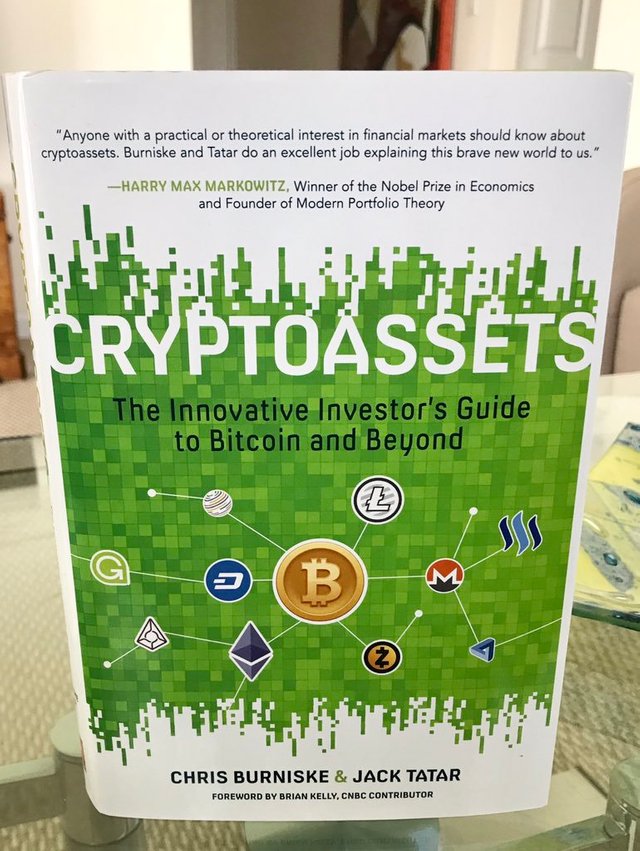 Cryptoassets: The Innovative Investor's Guide to Bitcoin and Beyond published earlier this year, tackles everyone's question: 'how much are cryptocurrencies really worth?'. It's a readable way for the beginner to get a handle on this question; the book outlines the kind of techniques that investors use when thinking about putting their hard-earned cash into one investment pot or other.
Cryptoassets: The Innovative Investor's Guide to Bitcoin and Beyond published earlier this year, tackles everyone's question: 'how much are cryptocurrencies really worth?'. It's a readable way for the beginner to get a handle on this question; the book outlines the kind of techniques that investors use when thinking about putting their hard-earned cash into one investment pot or other.
The uncomfortable fact - which the book inadvertently reveals - is that #cryptocurrency simply won't behave. That's because it's different - it's a currency, for a start. By trying to make #crypto defineable like stocks and bonds, Burniske and Tatar unconciously reveal the truth - they're just as much at the beginning of this as everyone else.
There are some useful concepts in the book, however, for the crypto enthusiast. The authors document, for example, various crypto bubbles. There have been six #Bitcoin crises between 2013 and early 17; their data clearly show all these crashes were steep on the price increase, then slow - agonisingly yet consistently- slow on the decline. It's happened again with #Steemit in 2016. It's just happened with #Powr. While prices spike in a matter of days, the falls go on for weeks. Ouch.
There are interesting concepts outlined, like 'velocity' (the number of times a coin is traded each day), or the fact that a more stable currency tends to have a greater reliance on fiat currrency pairs, rather other than crypto pairs.
Other tools get undone by events on the ground. There's a section on 'volatility', for example, which posits that supposedly 'mature' cryptocurrencies get less volatile as they get older. Bitcoin's volatility, they tell us, had, by the time of publication, fallen below 5% a day. Tell that to the people buying Bitcoin over the last two weeks.
The authros also follow the usual thinking around how much a crypto could be worth. If the remittances market, to use an example in the book, is worth $5tn a year, then Bitcoin could take a slice of that, say 10% or £500bn. If there are 21 million BTC in circulation that means each Bitcoin is worth roughly $23,000.
The problem that this sort of analysis comes up against is: how on earth do you accurately predict what slice of the market will be available? It's so pie in the sky as to be almost pointless. Mix it in with all the other possible markets for cryptocurrencies and the exercise of working out future market value is unreliable to say the least.
Coming from this conventional background, the book leaves out more innovative thinkers such as the Nick Gogherty, founder of #SolarCoin, who coined the Network Theory of Value. This posits that it's the size of the network, not a future market size, which determines a currency's price. These kind of concepts are surely more applicable to crypto - as a currency - than trying to port analysis of stocks and bonds accross and treating crypto as some kind of clever new derivative.
There are clear things that do affect the price of Bitcoin, such as regulatory announcements, and these are well documented in the book. So while the Burniske and Tatar's work - just like many professional financial advisors - is not 100% reliable when it comes to crypto, there are some valuable ideas that might prove useful in discussions around the future of altcoins.
Which in the end proves a more relaxing approach than the combination of biting your fingernails and hoping.
That's a very useful review Will.
Good to see more quality text around cryptocurrency.
Still, most of the interested folks are mislead by marketcap and price data. Thanks
Downvoting a post can decrease pending rewards and make it less visible. Common reasons:
Submit
Thanks @shkartik90 . "Most folks misled by market cap and price data" - could you expand?
Downvoting a post can decrease pending rewards and make it less visible. Common reasons:
Submit
thankyou for following me. i will upvote and comment on your every post if you do the same we both are new on steemit.if it works for you let me know just reply this post
Downvoting a post can decrease pending rewards and make it less visible. Common reasons:
Submit
@mangoboy - sure. How about you give me a selection of links to your posts and I'll go through them?
Downvoting a post can decrease pending rewards and make it less visible. Common reasons:
Submit
Congratulations @willcottrell! You have completed some achievement on Steemit and have been rewarded with new badge(s) :
Click on any badge to view your own Board of Honor on SteemitBoard.
For more information about SteemitBoard, click here
If you no longer want to receive notifications, reply to this comment with the word
STOPDownvoting a post can decrease pending rewards and make it less visible. Common reasons:
Submit
@scalextrix - a recommended read if you've got the time.
Downvoting a post can decrease pending rewards and make it less visible. Common reasons:
Submit
Congratulations @willcottrell! You have completed some achievement on Steemit and have been rewarded with new badge(s) :
Click on any badge to view your own Board of Honor on SteemitBoard.
For more information about SteemitBoard, click here
If you no longer want to receive notifications, reply to this comment with the word
STOPDownvoting a post can decrease pending rewards and make it less visible. Common reasons:
Submit
Thanks for the review Will, looks like an interesting read. I'll put it on my reading list for 2018.
Downvoting a post can decrease pending rewards and make it less visible. Common reasons:
Submit